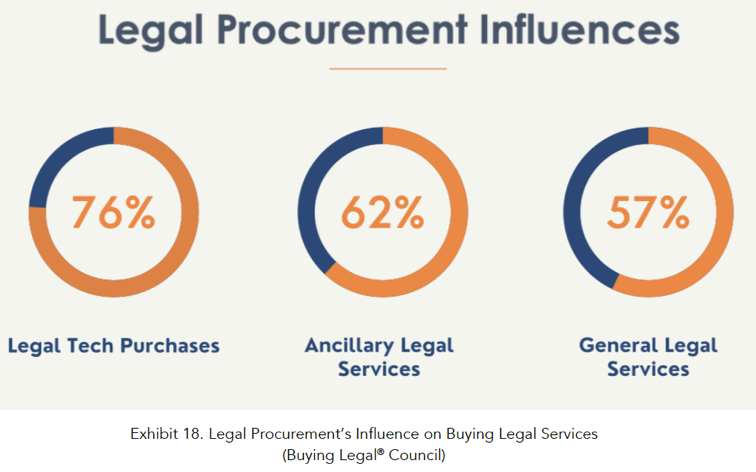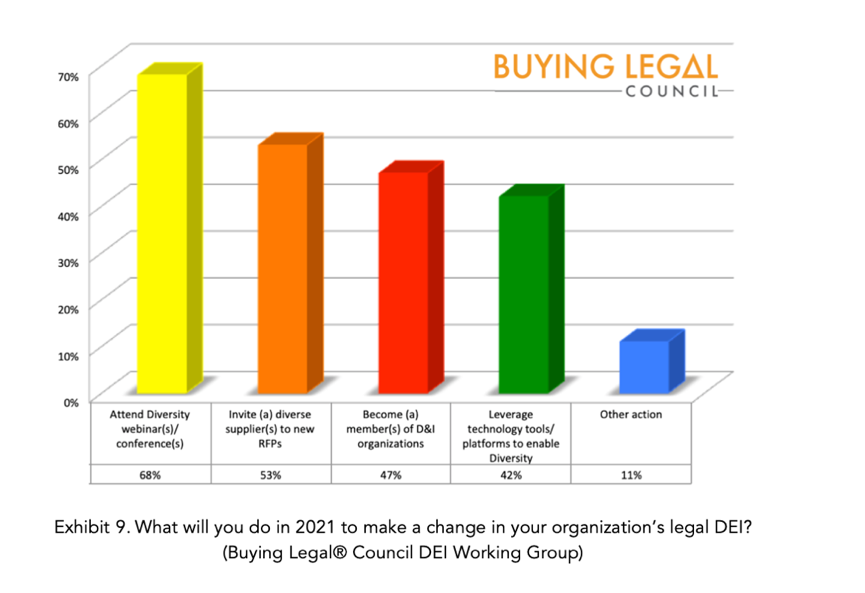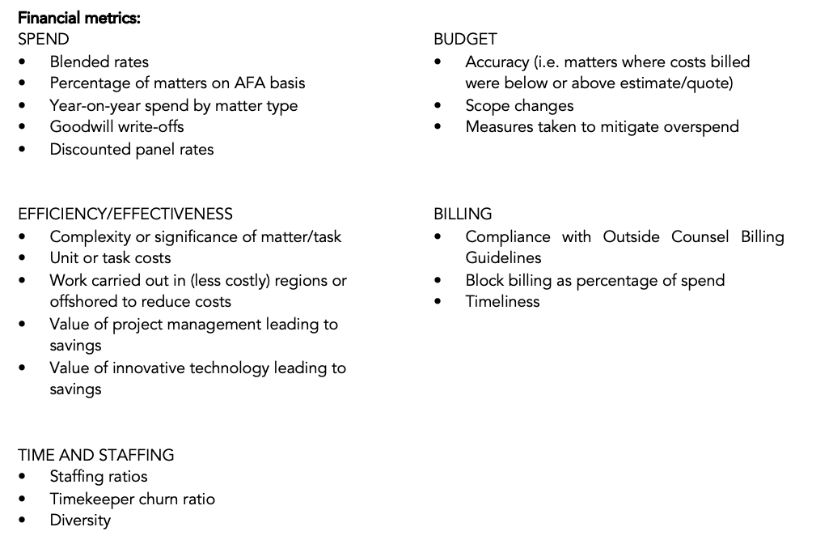Legal Procurement Metrics: What Are Your Clients Using to Measure Your Service?
By Matthew Prinn
November 04, 2021 | 6-minute read
Business Development Competitive Intelligence Content Type Article Additional Options Content Level: Essential
Client Services
Buying Legal Council (Buying Legal) is the international trade organization for legal procurement best practices for buying legal services and technology. In its recently released 2021 Marketing Intelligence Report, it takes a deep dive into the minds of buyers of legal services: legal procurement professionals.
These professionals focus not only on buying legal services and technology but also on managing the business side of the relationship with law firms and other legal services providers. They are most likely to be found in larger companies with sophisticated legal departments with a large outside counsel spend.
The 2021 Market Intelligence Report notes that these professionals focus on:
- Supporting the legal department in managing legal spend
- Managing the selection of law firms, legal services suppliers and legal tech providers, including the use of requests for proposals (RFPs)
- Establishing payment terms
- Negotiating contracts and managing fee proposals
- Monitoring compliance with negotiated engagement terms
- Evaluating providers with in-house counsel based upon criteria important to the legal department
- Collecting, analyzing and evaluating data on services delivery by preparing decision-grade data
Legal Procurement Influences
Law firms need to better understand these professionals and their goals as they continue to gain more prominence and influence in legal departments. While they are rarely ever the decision maker, they play a big role in influencing those that do make decisions, most often the general counsel or chief legal officer.

The Buying Legal report notes that “procurement is involved in 76% of legal technology purchases, 62% of ancillary legal services, 57% of general legal advice, 55% of alternative legal services, 48% of non-IP litigation, 45% of data protection and IT security, and 43% of transactional work (M&A, antitrust etc.).”
Metrics
The Buying Legal report notes that the top three goals for legal procurement professionals in 2021 are to 1) better capture and analyze spend data, 2) reduce legal spend and 3) better manage legal work. As capturing and analyzing data is the top goal, let’s look at the data being collected and the metrics being used in two key areas: diversity and inclusion, and financials.
Diversity and Inclusion Metrics
It’s no surprise to see diversity as a top priority for legal procurement in 2021, but it’s interesting to see more than half of respondents said they were actively pursuing new, diverse firms to work with. Many law firms ask how they can be more proactive in using RFPs to develop new business. This report highlights that there are opportunities for law firms to demonstrate their commitment to diversity, equity and inclusion (DEI), and use these efforts to proactively open new doors.

The Buying Legal report noted that 53% of respondents said they “plan to invite diverse law firms to new RFPs.” It’s also important to note that 42% of respondents were leveraging software technology to better measure diversity data.
Many law firms do not have a formal process in place to capture diversity data and are left to chase after dozens of timekeepers when responding to an RFP or pitch. If your clients are measuring staffing diversity data, your law firm may want to consider implementing your own internal monitoring system so that you can identify any issues before the client brings them to your attention. At the very least, you should educate yourself about the different software platforms available to track diversity and the benefits they can provide to your legal departments.
Law firms need to better understand these professionals and their goals as they continue to gain more prominence and influence in legal departments.

For some sophisticated legal departments using this software, they will not allocate work to your firm if you can’t meet a certain threshold of diversity staffing. Law firms should be up to date on the latest diversity classifications as metrics such as age, social mobility and cultural background are now being considered diverse along with the more traditional metrics such as gender and sexual orientation.
Tip: Law firms, practice groups or individual partners who have a strong diversity or inclusion story to tell should create a marketing plan to share with target audiences. Consider how you can make a strategic outreach to general counsel, legal operations and legal procurement professionals to see if they would be open to a meet-and-greet or sharing of materials with the hope to garner an invitation to the next RFP opportunity.
Financial Metrics
When people hear the word “procurement” they often immediately think they are just looking for the lowest price. But the reality is they are striving to gain the most value. When it comes to collecting data and measuring value, everything from spend and budget to efficiency, staffing and billing is evaluated.
The below chart pinpoints what metrics are the most common in each of these categories.

In looking at spend, for example, most law firms expect rates and year-over-year spend to be tracked. This includes “goodwill write-offs,” which many may not know to track. You want to ensure that you are highlighting these write-downs and write-offs in your billing process so that the client has a clear understanding of fees. Clients might not always easily spot the “value of project management savings or value of innovative technology savings,” so it’s up to the law firm to communicate this data. Does your client know when you staffed a matter in a less costly region? The more you know the metrics being tracked, the easier it will be to communicate any benefits that may not show up on an invoice.
Tip: Don’t know what metrics your clients are using? Ask and use it as an opportunity to set up a client visit (if offices are open) and do a meet-and-greet with the legal operations or procurement team to better understand who you’ll be working with and what they do. By getting to know them and having them appreciate working with you, you will see more work come your way.
This article is part one of a three-part series that focuses on trends in legal procurement. View part two, focusing on value-adds here, and part three, focusing on spend management tools, here.